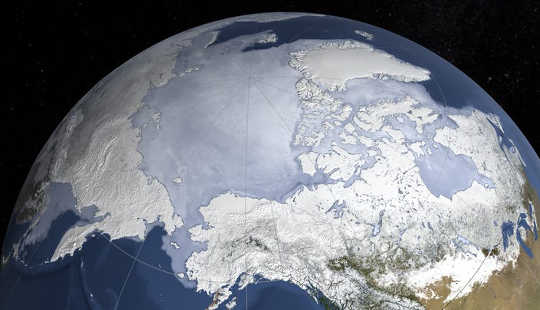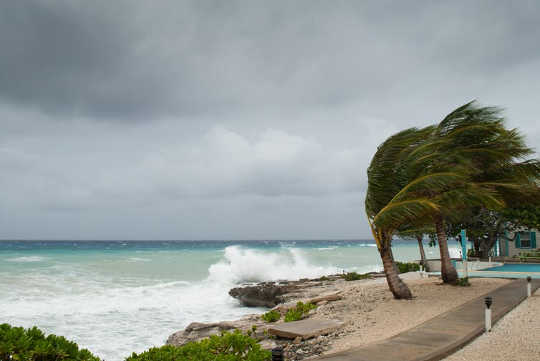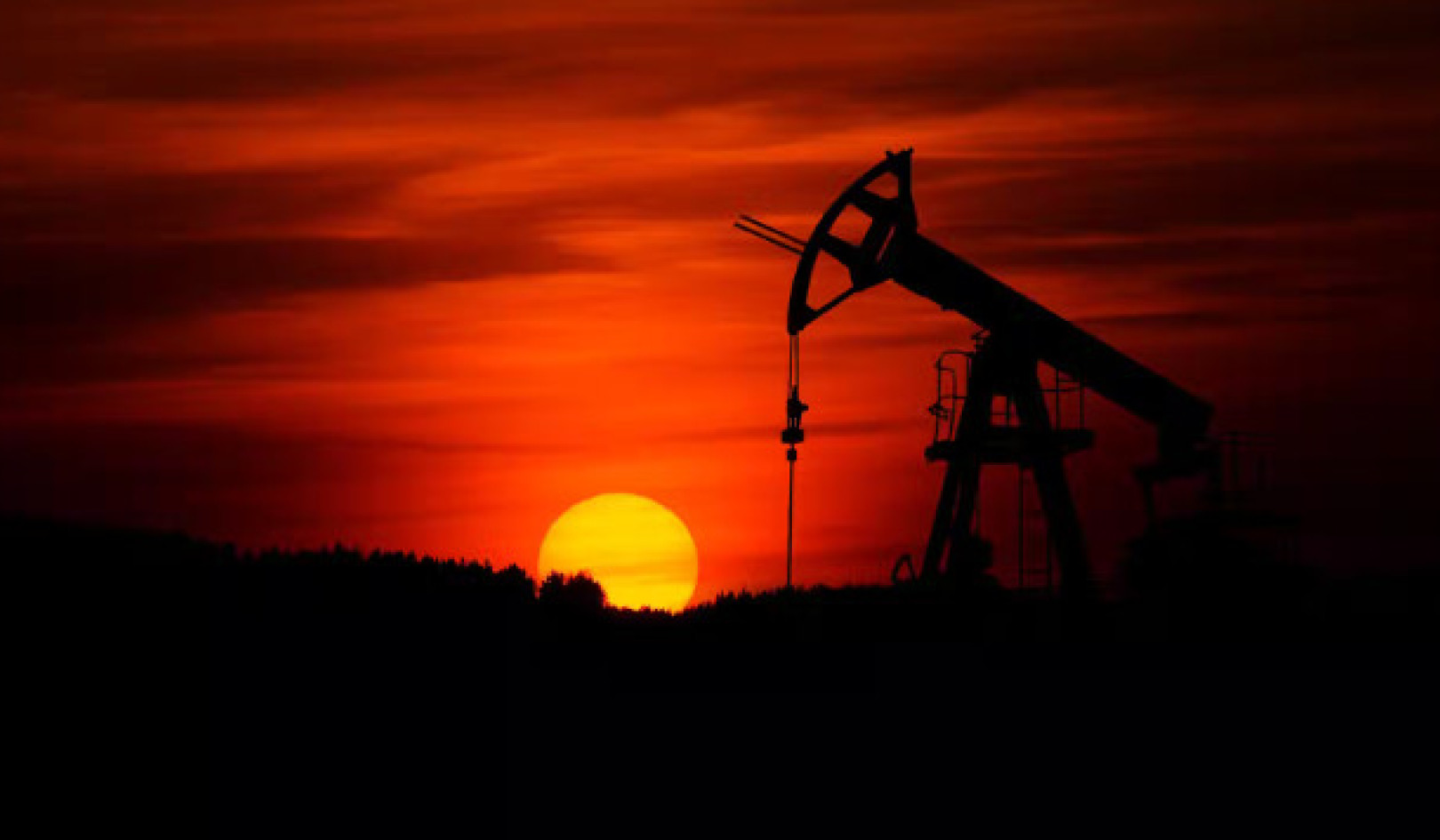
elRoce / शटरस्टॉक
विश्व के जलवायु वैज्ञानिकों ने कहा है: यदि हम मानव-प्रेरित ग्लोबल वार्मिंग को 1.5 तक सीमित करना चाहते हैं? हम शायद कर सकते हैं. लेकिन यह कठिन होगा, यह देखते हुए कि हम कहां से शुरू कर रहे हैं।
यह एक का निष्कर्ष है नया रिपोर्ट by the UN’s Intergovernmental Panel on Climate Change (IPCC). The focus on 1.5? is the result of years of international negotiation. Starting in 1994, a central aim of the UN’s climate change efforts (the Framework Convention on Climate Change, or UNFCCC) was to stabilise greenhouse gas concentrations at a level that would “prevent dangerous anthropogenic interference with the climate system”. Much was written on what this meant, particularly the word “dangerous”.
जलवायु परिवर्तन के नकारात्मक प्रभाव एक निरंतरता पर होते हैं, और एक बिंदु को परिभाषित करते हैं जहां जलवायु परिवर्तन खतरनाक हो जाता है, मुश्किल और विवादास्पद है। दूसरी ओर, जलवायु परिवर्तन वार्ता कुछ लक्ष्य के बिना काम करने के लिए मुश्किल है।
Fifteen years later, the UNFCCC’s Copenhagen Accord introduced a 2? target, and its 2015 पेरिस समझौते was even more specific: it “aims to strengthen the global response to the threat of climate change … by holding the increase in … temperature to well below 2? above pre-industrial levels and pursuing efforts to limit the … increase to 1.5?”.
आईपीसीसी यूएनएफसीसीसी को वैज्ञानिक सलाह प्रदान करता है, जो नीति बनाता है, और आईपीसीसी ने कभी भी तापमान लक्ष्य नहीं बताया है। हालांकि यह पांच "चिंता के कारणों" का उपयोग करके जलवायु परिवर्तन जोखिमों को सूचीबद्ध करता है। इनमें "अद्वितीय और खतरनाक पारिस्थितिकी प्रणालियों और संस्कृतियों" जैसे प्रभाव (जैसे कोरल रीफ्स) और "चरम मौसम कार्यक्रम" शामिल हैं, जिनमें से प्रत्येक को "ज्ञानी" से "बहुत अधिक" पैमाने पर रेट किया गया है। आईपीसीसी का सबसे हालिया (एक्सएनएनएक्स) पांचवां आकलन of the scientific evidence found that at around 1.5? warming there was a transition मध्यम से उच्च जोखिम तक खतरनाक पारिस्थितिक तंत्र और संस्कृतियों और चरम मौसम की घटनाओं के लिए। इस प्रकार पेरिस और आईपीसीसी आकलन के बीच स्थिरता है।
 जलवायु परिवर्तन कुछ प्रकार के चरम मौसम को और अधिक आम बना देगा। ड्रू मैक आर्थर / शटरस्टॉक
जलवायु परिवर्तन कुछ प्रकार के चरम मौसम को और अधिक आम बना देगा। ड्रू मैक आर्थर / शटरस्टॉक
The Paris Agreement asked the IPCC to report on the impacts of global warming of 1.5?, and this new publication is the result. Its tone is not “we must avoid 1.5? warming”, as you might think from many commentators, but more “if we want to avoid 1.5? warming, this is what must be done”. The report contrasts the impact of 1.5? and 2? warmings, giving information on what would be gained by the extra effort needed to limit warming to 1.5?.
As the IPCC’s reports are largely based on a critical assessment and synthesis of published scientific papers, many of its latest conclusions are unsurprising. There are many well recognised uncertainties in understanding climate change - for instance, even if we set a course aiming to hit 1.5? (which is mostly determined by future CO? emissions), we could end up hitting, say, 1? or 2? instead. The report provides uncertainty ranges in its estimates and confidence levels, based on expert judgement.
The new report tells us that human activity has already caused about 1? of global warming, while at the present rate of warming (0.2? per decade) we’ll hit 1.5? by about 2040. National pledges made as part of the Paris Agreement still mean we are on course for warming of about 3? by 2100, meaning four of the five “reasons for concern” would then be in the high to very-high risk category.
Achieving the 1.5? target will require anthropogenic CO? emissions to decline by 45% by 2030 (relative to 2010). By 2050, they will need to reach “net zero” - any further CO? emissions due to human activity would then have to be matched by जानबूझकर हटाने of CO? already in the atmosphere, including by planting trees. Net zero would have to occur by around 2075 to meet a 2? target.
 थाईलैंड में एक वनों की कटाई परियोजना। Somrerk Witthayanantw / Shutterstock
थाईलैंड में एक वनों की कटाई परियोजना। Somrerk Witthayanantw / Shutterstock
Many illustrations are given for the difference between 1.5? and 2? worlds. At 1.5?, summertime Arctic sea ice is projected to disappear once per century, compared to once per decade at 2?; 8% of plants that have been studied would lose half their climatically-suitable area, compared to 16%; sea level rise would be 10cm less (with 10m fewer people impacted at today’s population levels); and while coral reefs might decline by a further 80% at 1.5?, they could virtually disappear at 2?.
The report identifies various routes by which emissions cuts would limit warming to 1.5?; each makes assumptions about future changes in, for example, economic strategy, population growth and the rate at which low carbon energy is adopted. The IPCC recognises the challenges are “unprecedented in scale” but notes, for example, “the feasibility of solar energy, wind energy and electricity storage mechanisms have substantially improved over the past few years”.
The report is sensitive to the fact that changes required to meet 1.5? must be consistent with the UN’s wider सतत विकास लक्ष्यों। जलवायु परिवर्तन सीमित करने से स्वास्थ्य, स्वच्छ ऊर्जा, शहरों और महासागरों से जुड़े लक्ष्यों को पूरा करने में मदद मिलेगी। लेकिन अगर सावधानीपूर्वक प्रबंधित नहीं किया जाता है तो "दूसरों पर गरीबी, भूख, पानी, ऊर्जा पहुंच) पर संभावित नकारात्मक प्रभाव पड़ते हैं।"
तो अगला कहाँ? बेशक, निष्कर्षों पर व्यापक रूप से कई स्तरों पर बहस की जाएगी, लेकिन आंखें दिसंबर की शुरुआत में केटोवाइस, पोलैंड में अपनी अगली बैठक में यूएनएफसीसीसी की प्रतिक्रिया पर होंगी।![]()
के बारे में लेखक
कीथ शाइन, मौसम विज्ञान और जलवायु विज्ञान के रेजियस प्रोफेसर, यूनिवर्सिटी ऑफ रीडिंग
इस लेख से पुन: प्रकाशित किया गया है वार्तालाप क्रिएटिव कॉमन्स लाइसेंस के तहत। को पढ़िए मूल लेख.
संबंधित पुस्तकें
at इनरसेल्फ मार्केट और अमेज़न






















